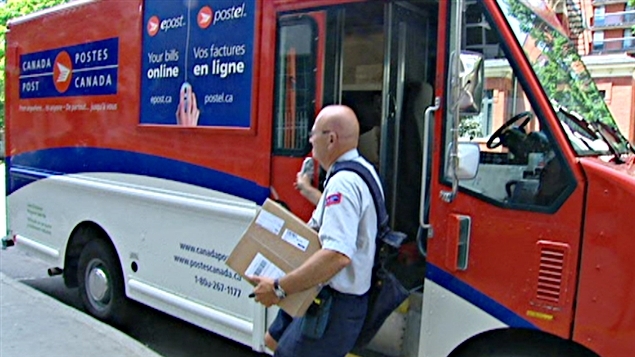
On January 18, Canada Post Corporation (CPC) announced that 2020 was a record year for parcel delivery. Obviously, public health measures had something to do with it. But parcel delivery at CPC has been growing exponentially for the past five years, and it shows no sign of slowing down.
With this kind of growth, a corporation like Canada Post must roll up its sleeves and review its values, its commitment, and the service portfolio it offers to the population, including businesses. Canada Post already has the infrastructure and the network it needs to be an integral part of the post-COVID recovery and to become a leader in sustainable development. In doing so, it would create jobs across the country and be part of the government’s environmental plan, while also respecting its mandate to be financially self-sustaining.
To achieve this, the Canadian Union of Postal Workers (CUPW) has launched a bold campaign called “Delivering Community Power.”
Whether in the city or in the country, in remote areas or in the suburbs, post offices are everywhere throughout Canada. CPC has more than 6,400 outlets, the largest retail network in the country.
CUPW proposes to accelerate the electrification of Canada Post’s vehicle fleet. CPC operates more than 20,000 vehicles, generating 65 kilotons of CO2 every year. The acquisition of electric vehicles would benefit the environment, stimulate the automotive sector and create decent jobs.
Now, imagine if Canada Post installed charging stations at its facilities and made them available to all, creating the largest network of charging stations in Canada. Imagine you are driving on the highway or an isolated road, but the battery of your electric car is running low. No more worries, because you know you will find a charging station at the post office in the next village.
COVID has brought to light the problem of high-speed Internet access in hundreds of communities. With its extensive presence in those communities, Canada Post could play a central role perfectly in line with the government’s commitment to bring high-speed Internet access to all communities. This also fits with Canada Post’s mission, because it supports online shopping, and online shopping fuels parcel delivery.
In 62 countries, the post office also provides banking services. Canada’s extensive postal network could also provide crucial banking services, especially in remote, rural and Indigenous communities, which have been abandoned by major banks. Did you know that there are only 66 bank branches in all 700 First Nation communities? A postal bank would have the power to reinvest in communities through infrastructure or social housing, for instance. In addition, a more inclusive postal bank would reduce the dependence of thousands of workers on payday lenders and their usurious interest rates.
Finally, imagine letter carriers knocking at the door of someone who lives alone. They could offer this check-in service at the request of a family member who could receive a notification saying that everything is fine, or that help has been called in the case of an emergency. The postal service in France and Japan already offers this service.
My 56,000 brothers and sisters from CUPW will not accept that Canada Post is sitting idly, refusing to change its old values and habits. I urge you to contact your Member of Parliament to demand a strong postal service for the future. It’s up to you!
Scott Gaudet, Postal Worker
See also: Letter from a postal worker: A better Canada Post for everyone
Check out our new community calendar!
With a special thanks to our generous donors who make publication of the Nova Scotia Advocate possible.
Subscribe to the Nova Scotia Advocate weekly digest and never miss an article again. It’s free!




This makes so much sense.
I like the ideas..innovative and make sense….We had the letter Carrier alert system at one time but it was cancelled…